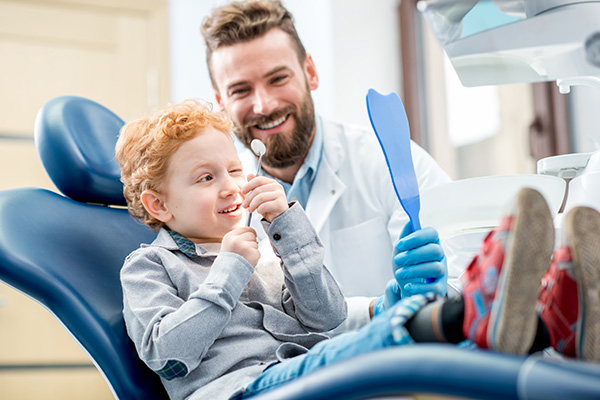 Regular visits to the general dentistry office are essential for both adults and children alike. As a parent, you may have a lot of questions regarding dental appointments for your child. Knowing when to take your child to their first general dentistry appointment and what to expect from that appointment can help you prepare adequately.
Regular visits to the general dentistry office are essential for both adults and children alike. As a parent, you may have a lot of questions regarding dental appointments for your child. Knowing when to take your child to their first general dentistry appointment and what to expect from that appointment can help you prepare adequately.
When to schedule your child’s first visit
If the child already has a tooth, then it is time to take them to the dentist. According to the American Dental Association (ADA), this occurs when the child is around six months old. Ideally, parents should not delay the dental appointment until after the child's first birthday, whether the first tooth has erupted or not. A dental visit is important if there are signs of anomalies in the child's oral cavity, including white patches, lesions, or bleeding.
The importance of early dental visits
Tooth decay affects approximately one out of every five children under the age of five, according to the American Association of Pediatric Dentists (AAPD). The dentist will identify and provide effective treatment for any emerging problems if they are caught early. They will do everything possible to prepare the child for a lifetime of healthy smiles. During the visit, the general dentist will examine the child for tooth decay, injuries, and other problems and monitor changes in the child's mouth as they grow.
Choosing the right dentist
It is important to take the child to a dentist who has experience handling children with small mouths and has a knack for turning what seems like a terrifying event for certain children into something fun.
It is also crucial to have the right dental equipment for examinations. The exam room décor, such as vividly colored wall paint and interesting murals, should appeal to children. Games, children's periodicals, and maybe a fish tank in the waiting area can help alleviate anxiety. When a youngster has a pleasant dental experience, they will be willing to return every six months for a checkup.
Preparing for the child’s first dentist visit
Ahead of the child's first tooth, gently wipe their gums with a towel (or gauze) and water, ideally after breastfeeding. There are also soft toothbrushes intended for children's mouths, although dental professionals advise against using fluoride toothpaste until the child is at least two years old. Gum-cleaning routines will help acclimate a child to a regular dental regimen early on and make their first dentist visit more comfortable.
The appointment
During the appointment, the general dentist will do a regular checkup on the child, searching for tooth decay and inspecting their gums, jaw, and bite, as well as looking for frenum issues or other abnormalities that might impair teeth or speech patterns. They will also gently clean the baby's teeth and gums, provide tips on properly caring for the child's mouth, and address any concerns.
Final note
Most dentists recommend dental checkups at least twice a year, but you should ask your general dentist what they recommend for your child's specific requirements. Contact the general dentistry office today to book an appointment.
Request an appointment or call Dragonfly Dental of Port Charlotte at 941-676-9225 for an appointment in our Port Charlotte office.
Related Posts
The field of general dentistry involves taking care of the whole mouth, not only the teeth. Tobacco use is dangerous to your overall well-being, but your oral health is particularly at risk. When you smoke, your mouth is the first place that the nicotine and tar go. A general dentist sees firsthand the damage that…
Gingivitis is a type of mild gum disease that is often caused by poor general dentistry and oral hygiene habits such as not brushing and flossing teeth as often as recommended. Other causes include tobacco use, poor nutrition, and taking certain medications. Fortunately, this condition usually remains mild if caught and treated early. If not…
Many people have anxiety regarding going to the dentist. General dentistry visits can be easier if you have some tools to ease your nerves and get through your appointment with minimal stress. Fortunately, there are ways to ensure that you are calmer during dental or other medical appointments.A significant number of people fear going to…
